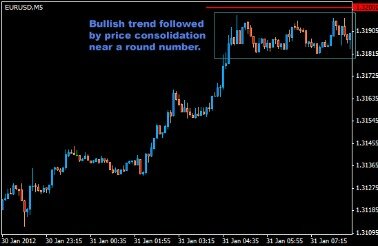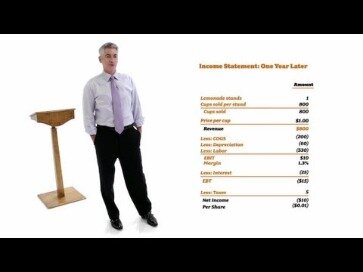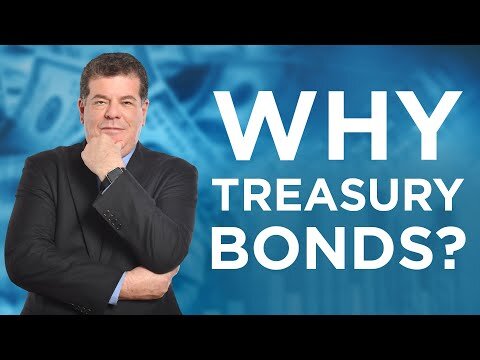
To test this assertion, we conduct more advanced empirical models in the following sections. Moreover, Bitcoin exhibits the highest return and highest risk during both sub-periods. As indicated by Baur et al. (2018), this spectacular growth is explained by a strong demand from institutional investors. For instance, Tesla announced on February 8, 2021 that it has bought $1.5 billion worth of Bitcoin, and it started accepting Bitcoin as a payment method for its products.4
Furthermore, the Jarque–Bera test rejects normality for all data returns during both sub-periods.
- The highest differentiation between coefficients was observed in the shortest time horizon (Period_2a), and the lowest in the medium term (Period _2c).
- To assess the robustness of the results, we additionally employed the elbow method as the alternative tool for determining the optimal number of clusters [96–98].
- We select the closing price on February 21 as the starting point, because it is the last trading day before the first market jump that contemporaneous newspaper accounts attribute to COVID-19.
- The best performing industries include healthcare and medical devices, which is understandable on the basis that virtually every country in the world is going through catastrophic mortality deterioration due to COVID-19 (Table 2).
(ii) Second, no central authority intervenes to adjust or control their mining transactions and activities (Baur, Hong, & Lee, 2018); therefore, they are both independent from inflation. (iii) Third, both assets have a finite supply, and it is this scarcity that makes them valuable. Since Bitcoin’s number of units in circulation is limited to 21 million, making it an anti-inflationary asset, which brings it closer to gold. (iv) Fourth, the asymmetric reaction to positive and negative news characterizes both Bitcoin (Bouri, Jalkh, Moln’ar, & Roubaud, 2017) and gold (Baur & Glover, 2012). The plot shows the relationship between monthly stock returns and daily stock return volatility for the universe of the S&P1500 firms in March 2020.
The virus has the potential to influence in a destructive way individuals, businesses, industries and entire economies [1]. Its appearance, in principle, meant a significant burden and reorganization of the health service, and the need to provide additional disinfection and hygiene measures, but its global scope is expected to be the most influencing economic and social event for decades [2]. The problem of the COVID-19 virus has been its rapid spread, which resulted from airborne transmission and intensive use of public transport, including intercontinental flights. The necessity to prevent the failure of health care systems and counteracting the effects of COVID-19, which poses a direct threat to the health and life of citizens, resulted in the forced and often drastic limitation of economic activity. In fact, the pandemic brought global economic activity to a sudden halt in the first half of 2020 [3].
Cramer’s Covid-19 Index
Our results further show that during the pandemic there have been improved returns for clean energy firms as a consequence of investor attention, but not for fossil fuel firms. Our findings provide empirical evidence for the advantages of green recovery schemes in influencing financial markets, especially for clean energy stocks. These results suggest there are benefits for further promotion and implementation of green recovery stimulus measures post-pandemic.
- Such results may confirm their relative high stability in general during turmoil independently on the time frame.
- Its appearance, in principle, meant a significant burden and reorganization of the health service, and the need to provide additional disinfection and hygiene measures, but its global scope is expected to be the most influencing economic and social event for decades [2].
- “It’s really important for new investors to understand risk,” Mottola said.
- Finally, natural gas industry is another big winner for the reasons already stated above.
To fill the gap in the literature, our study draws new insights into the potential of Bitcoin and gold to hedge against fluctuations in financial markets and their role as safe haven during the COVID-19 virus outbreak. In short, no previous infectious disease episode led to daily stock market swings that even remotely resemble the response in 2020 to COVID-19 developments. While other periods have seen large declines or increases in equity markets over periods of several weeks or months, the COVID-19 period stands out for an extremely high frequency of large daily stock market moves. Table 1 draws on our classification effort to underscore the unprecedented impact of the COVID-19 pandemic on the U.S. stock market. There were 23 daily stock market jumps from March 1918 to June 2020, which spans the three major waves of the Spanish Flu. When interest rates rise, bond prices fall; generally, the longer a bond’s maturity, the more sensitive it is to this risk.
Financial market trends since COVID
The most unstable clusters in the medium periods were Cluster_2 –in terms of profitability, Cluster_1 –in terms of volatility and Cluster_4 –in terms of volume. As the most stable clusters we can indicate Cluster_1 –in terms of profitability, Cluster_3 –in terms of volatility. Same as with short periods, in terms of volume all the investigated clusters, except Cluster_4, were characterized by the similar level of stability. Generally, we can conclude that Cluster_3 (in all periods) and Cluster_5 (in the short period) distinguishes from other clusters in terms of their overall stability, and that Cluster_4 can be considered the most unstable. In the medium term, the most stable according to volume and volatility were companies from Cluster_3 (WIG-chemical, WIG-mining, WIG-oil&gas and WIG-energy).
Buy Vail Resorts & CSX, steer clear of CVS & FirstEnergy: Portfolio manager – Yahoo Finance
Buy Vail Resorts & CSX, steer clear of CVS & FirstEnergy: Portfolio manager.
Posted: Wed, 12 Jul 2023 22:06:04 GMT [source]
Smith is a graduate of St. John’s College in Annapolis, Md., the third-oldest college in America. Although false statements relating to coronavirus may be about any company, microcap stocks may be particularly vulnerable to fraudulent investment schemes, including coronavirus-related scams. There is often limited publicly-available information about microcap companies’ management, products, services, and finances. This can make it easier for fraudsters to spread false information about the company and to profit at the expense of unsuspecting investors. Future research could implement the Value-at-Risk (VaR) analysis in a time rolling-window manner to detect and manage market risks over different time horizons, and investigate portfolio profit & loss (P&L) dynamics.
Finally, the study offers practical implications for different industries in the country. In the literature on stability of financial markets after the outbreak of the pandemic COVID-19 the significantly lesser part is devoted to stock markets. The stability of stock market can be defined as the constant https://trading-market.org/sign-up-with-a-premier-broker-learn-much-more-in/ (stable) propagation of systematic shocks on a stock market in normal and extreme market conditions [73]. The definition and work published by the mentioned authors have led to further investigations performed by Ayinde and Yinusa [74] for African market and Chirila and Chirila [75] for CEE countries.
Small Business Programs
When analyzing single-day extreme events, namely Black Monday, Black Thursday, and Black Monday II, we find that firms that operate in crude petroleum sector are hit hardest and lose over 60% of their market values in a day. In contrast, firms in natural gas and chemicals sectors improve their market valuations and earn positive returns of more than 10%, on average. Further, we study industry-level patterns and show that https://forex-world.net/brokers/svk-markets-review-is-svk-a-scam-or-legit-broker/ during March 2020 stock market crash the best performing industries include healthcare, food, software and technology, as well as natural gas. The superior performers in these industries yield a positive monthly return of over 20%. On the other hand, sectors including crude petroleum, real estate, as well as hospitality and entertainment experience rapid descent of their market capitalizations and plunge over 70%.
Optimal hedge weights and ratios provide a general understanding of how hedge is constructed to minimize risk. However, they do not help identify the effectiveness of the hedge over time. Following Engle (2002), the estimation of the A-DCC model is conducted using a two-step maximum likelihood method. (1) In a first step, we separately estimate the conditional variances using a univariate GARCH-type model for each time series in Eq. Where μt stands for the conditional mean vector that may include a constant and/or past observations. The mean equation of the A-DCC model is specified as an autoregressive moving average (ARMA) process, as debated by Kyrtsou and Labys (2007), since overlooking this characteristic may undermine some of the dynamics of the relationships between the studied variables.
The Market Thinks the Fed Is Wrong. Why That’s Dangerous.
Finally, natural gas industry is another big winner for the reasons already stated above. Overall, each of these these industries earn a monthly return of over +20%. Most new investors (64%) were taking on greater risk by using their brokerage accounts to buy individual company stocks, not more broadly diversified mutual funds. Only 28% of new investors were using the brokerage accounts to buy mutual funds.

Perrigo Co Plc (PRGO.N) jumped about 7% as the consumer healthcare products company said it would sell its underperforming generic drugs business for $1.55 billion. Confined to their homes for months and subjected to a rapid reordering of their perceived health risks and economic prospects, consumers are emerging from a shared trauma that will change their priorities and concerns for years to come. We remained in a period of low returns and the cost of living continued to rise. In this section, we focus on the safe haven property during extreme movements of the health crisis. Where rh,t is the hedged portfolio return; rj,t is the Bitcoin (or gold) return; ri,t is the stock index (or currency) return; and βi,t is the optimal hedge ratio calculated from Eq.
Bitcoin (BTC) prices are collected from ; and one ounce OR-LBMA of gold prices (GLD) are obtained from All exchange rates are quoted against the U.S. dollar (USD). The sample spans the period from April 29, 2013 to January 5, 2021 with a total of 2007 observations. Baur and Lucey (2010) provide clear definitions and distinction of diversifier, hedge, and safe haven. An asset is classified as diversifier if it is positively, but weakly correlated, with another asset or portfolio on average.

Hood and Malik (2013) find that gold is a hedge for the U.S. stock market, but its safe haven property is low relative to the volatility index. Beckmann et al. (2015) show that gold serves both as a hedge and as an effective safe haven. Lucey and Li (2015) study the role of precious metals as safe https://currency-trading.org/software-development/how-to-write-a-great-request-for-proposal-rfp-for/ havens in a time varying framework and find that the strength of gold as a safe haven changes over time. For emerging countries, Chkili (2016) examines the relationship between gold and the stock markets of BRICS countries and suggests that gold can serve as a safe haven against extreme movements.
The relative similarities in terms of volume and volatility change between Cluster_1 and Cluster_2 can be observed altogether with instability of the composition of these clusters which is reflected in the process of interchanging some of their index components over time. It should be noted that the differences in change of profitability can be explained by the high variety of the sectors belonging to Cluster_2 and their very different potentials to generate profits in the pandemic. The linking factor for all of those sectors is a proximity of the absolute value of the change in profitability.

Table 8 presents the composition of the obtained clusters and the mean silhouette coefficient for each of them (i.e. the average of the silhouettes for the indices which constitute the cluster). The value of the mean silhouette coefficient depends on the homogeneity of the cluster and its separation from the other ones. To assess the robustness of the results, we additionally employed the elbow method as the alternative tool for determining the optimal number of clusters [96–98]. The idea of this method is to calculate the within-cluster sum of squares (see Eq (1)) for different number of clusters (denoted by SSE(K)) and to plot a line chart of SSE(K) against the number of K. It can be easily seen that SSE(K) tends to decrease toward 0 as K increases.



